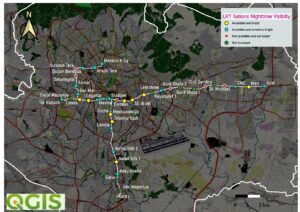Urban mobility is an essential part of daily life in cities like Addis Ababa. However, public transport systems often fail to meet women’s unique needs and safety concerns. Globally, women face critical challenges in public transport, from harassment to accessibility issues. According to a 2020 report by the International Labour Organization (ILO), limited access to safe transport is a major barrier to women’s participation in economic activities, reducing their involvement by 15.5 percentage points.
Additionally, a 2018 World Bank report highlighted that overcrowding, harassment, and poor infrastructure are significant safety concerns for women using public transport worldwide. In Addis Ababa, these issues are also pressing, thus highlighting the need for efforts to address them.
State of Safety in Addis Ababa’s LRT System
The Addis Ababa Light Rail Transit (LRT) has shaped urban mobility in the city. Since its launch in 2015, it has provided a reliable and efficient alternative to congested roads. However, this positive impact has been marred by a rise in harassment incidents within the LRT system. Concerns have emerged about the prevalence of verbal, physical, and other forms of harassment, creating a hostile environment for passengers, notably women.
According to Women Mobilize Women, gender-disaggregated data is crucial to understanding and tackling these issues effectively. In the context of Addis Ababa, however, the lack of such data on how women use public transport and the specific challenges they face meant these issues often went unaddressed. To bridge this gap, a mapping event/ mapathon was initiated to improve the understanding of women’s experiences and needs within Addis Ababa’s public transport system.
The Mapathon: The Mapping Event
Between April 22 and April 27, 2024, the “Map It, Change It: Unleashing the Power of Gender Data for Safer Public Transport in Addis Ababa” mapathon was held in Addis Ababa, Ethiopia.
The event was conducted under the umbrella of the DigitalTransport4Africa (DT4A) initiative and as a collaboration between the World Resources Institute (WRI) Africa and the Transformative Urban Mobility Initiative (TUMI), with support from the German Federal Ministry for Economic Cooperation and Development (BMZ). It aimed to empower local communities by directly collecting women’s lived experiences through participatory mapping and data collection, focusing on usage patterns, challenges, and preferences from a gendered perspective.
Data Collection
To better understand the issues, interviews with LRT passengers and surveys were conducted. The interviews sought to gather firsthand accounts of their experiences, travel patterns, satisfaction levels, preferences, and challenges. Surveys were carried out at various LRT stations and segments to grasp passenger behaviour, crowd dynamics, safety measures, accessibility features, and overall operation of the system. Data were collected using KoboToolbox and KoboCollect. These tools facilitate the data collection process by providing real-time data entry and facilitating the management of collected data.
At this stage, three types of survey data were collected:
- Station Survey data: It was collected to assess the general conditions of the station infrastructure.
- Segments Survey data: This was collected to evaluate the surrounding road segments that connect to the stations.
- User Survey data: It was collected to get detailed information from LRT users.
Data were collected at different times of the day to better understand variations in LRT’s usage and incidents. The timeslots adopted in this event were:
- Morning peak hour (07:30 – 10:30 AM)
- Afternoon peak hour (04:00 – 6:30 PM)
- Off-peak hour
- Nighttime
Data Analysis
Data was analyzed using GIS Software and Excel to identify key trends and insights. This allowed for evaluating the frequency and timing of harassment incidents, as well as passengers’ perceptions of safety.
Findings
– Frequency and Timing of Harassment
Overall, the analysis showed that most harassment incidents occurred during peak hours, especially during the daytime. Out of 367 reported incidents, 197 occurred during the daytime peak, 69 at night, and 101 during both day and night.
– Passenger Perceptions of Safety
Survey data from 637 passengers revealed that more passengers felt safe and protected at train stations (412 safe, 119 very safe) compared to inside the trains (201 safe, 35 very safe). This suggests that the presence of station staff and security measures at stations contributed to a higher sense of safety. The highest proportion of gender harassment incidents were reported by passengers aged 21 to 34, with women being more frequently targeted.
Insights Into Findings
-
Gender Disparities in Harassment:
Women are disproportionately affected by harassment in the LRT system, experiencing both verbal and physical abuse. Many incidents are also reported by men, primarily related to theft and overcrowding.
-
Impact on Ridership:
Harassment negatively impacts overall station ridership and passengers’ perception of safety, deterring many from using the LRT.
-
Station vs. Train Safety:
Passengers feel safer at train stations compared to inside the trains. This calls for the need for enhanced security measures within the trains.
Figures
Figure 1: Harassment, its perpetrators, and time of occurrence

Figure 2: Users’ Reaction during harassment
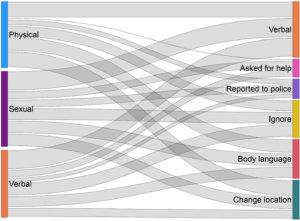
Figure 3: Harassment in age groups
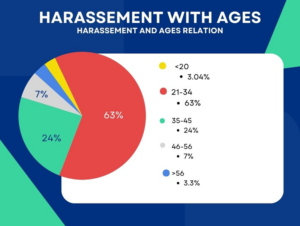
Figure 4: Types of harassment
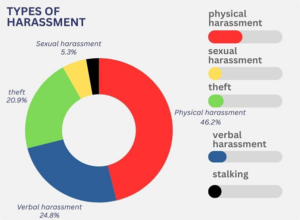
Figure 5: Harassment occurrence at stations

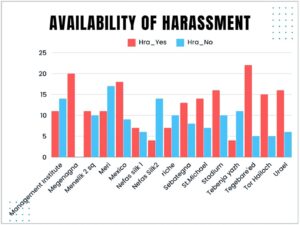
Figure 6: Harassment occurence
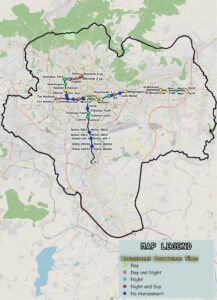
Figure 7: Afternoon peak hours stations users number
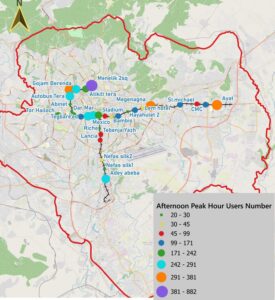
Figure 8: Offpeak hour Station users number
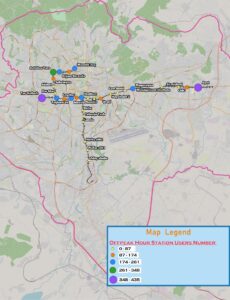
Figure 9: Availability of light infrastructure
